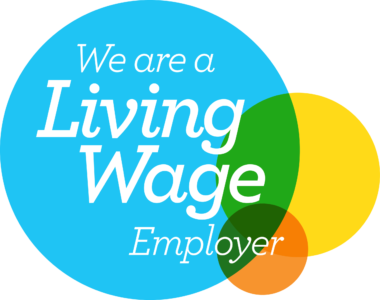The gender pay gap reporting deadline, carer’s leave, mandatory vaccination for health and social care workers, the end of the Furlough Scheme and flexible working are covered in this month’s Quick fire.
Gender pay gap reporting deadline
Employers with 250 or more employees who are required to report their gender pay gap data must do so by 5 October 2021.
The deadline was extended by six months due to the COVID-19 pandemic, and relates to payroll information taken from the ‘snapshot dates’ of 31 March 2020 (public sector employers) or 5 April 2020. The Equality and Human Rights Commission (EHRC) has suspended enforcement during the past six months, but will start taking enforcement action again from 5 October 2021.
A new toolkit has been published jointly by the Chartered Management Institute (CMI) and EHRC to support organisations in tackling their gender pay gap. This follows a warning from the EHRC that there is a risk of employers de-prioritising the issue despite evidence that the gender pay gap disparity has widened during the pandemic.
The toolkit provides real-life case studies from business leaders, some ‘tried and tested’ approaches for leaders to consider, practical support on developing an action plan and links to further resources from the Behavioural Insights Team.
New right to ‘carer’s leave’ confirmed
The Government has published its response to a previous consultation on proposals to introduce a new right to take carer’s leave, which closed on 8 June 2020.
The response confirms that the Government intends to introduce an entitlement to carer’s leave as a day one right for employees. The leave will consist of one week (five working days) of unpaid leave per year, for those employees with long-term caring responsibilities.
Eligible employees will be able to take the leave in flexible blocks of full or half days or up to a whole working week. The leave can be taken in order to provide care, or arrange care, for a person with a long-term care need, such as an illness or injury or issues relating to old age. Employees will be required to give notice that is at least twice the length of the time being requested as leave, plus one day.
A date for implementation of this new right has not yet been confirmed. New legislation will be brought forward “when parliamentary time allows”.
Mandatory vaccination for health and social care workers
Following a previous consultation and the implementation of new regulations making COVID-19 vaccination a condition of employment for workers in care homes (see our previous Quick fire), the Government has now issued a further consultation on extending the requirement to cover health and social care workers.
The new consultation seeks views on whether COVID-19 vaccination should be a mandatory requirement for other health and care settings, and also whether the same requirement should apply to the annual flu vaccination. It will consider the risks in clinical settings which could be mitigated by vaccination, including the level of interaction between staff and patients, the vulnerability of patients and high risk procedures.
If introduced, the requirement would apply to frontline health and care workers who have face to face contact with patients and clients through the delivery of services as part of a CQC regulated activity. Medical exemptions would apply.
The consultation closes on 22 October 2021.
Furlough Scheme ending this month
The Coronavirus Job Retention Scheme (CJRS) will finally come to an end on 30 September 2021. The deadline for employers to make a claim under the scheme is 14 October 2021 and any amendments to a claim must be submitted to HMRC by 28 October 2021. Recent figures published on 9 September 2021 show that there were still 1.6m furloughed workers on 31 July 2021.
The Trades Union Congress (TUC) has called on the Government to extend the scheme further and introduce a permanent short-time working scheme, as well as cancelling the cut to Universal Credit, to avoid the “hammer blow” to low-paid workers. It appears however that the CJRS will not be extended in any form beyond September, and there are no signs that the Government proposes to reintroduce either the Job Support Scheme (originally announced in September 2020) or the Job Retention Bonus (announced in July 2020).
According to data published by the Insolvency Service earlier this month, there has been a continued decline in the number of notified collective redundancies, suggesting that redundancy and unemployment levels may be much lower than had been anticipated when the CJRS ends on 30 September. Notified collective redundancy figures for August 2021 dropped by approximately 60% compared to January 2021.
Right to request flexible working
A new consultation has been published on proposals to extend the existing right to request flexible working from ‘day one’ of employment. The consultation is seeking views on how to make flexible working the ‘default position’, which was a manifesto commitment by the Government on 2019.
The consultation makes it clear that while the Government’s ambition is to make flexible working the default, it is not considered practical or desirable to remove the employer’s ability to turn down a request. As such, the right will remain a ‘right to request’ on the part of the employee, to initiate a conversation between employer and employee on how to make a flexible working arrangement work.
The Government considers that the best way to achieve the aim of making flexible working the default is by a “rebalancing” of the existing statutory framework, and the consultation sets out five proposals for consideration:
- removing the existing qualification period of 26 weeks’ service for making a request for flexible working, meaning it is a ‘day one right’
- whether the existing eight business reasons for refusing a statutory request remain valid
- requiring the employer to suggest alternative arrangements to those proposed, where possible
- whether to amend the administrative process underpinning the right to request, for example allowing multiple requests (rather than one) per year or reducing the time period for a response.
- how the right to request a temporary flexible working arrangement could be better utilised.
The Government has also invited the Flexible Working Taskforce to consider how to move on from the immediate response to COVID-19 and how best to make use of lessons learnt during the pandemic, as more people return to the office and employers respond with new approaches to working. In addition, a further ‘call for evidence’ will be launched to seek views on how to secure a genuinely ‘flexible working friendly’ culture across and within organisations, including exploring the need for ‘ad hoc’ and informal flexibility.
The consultation confirms that the Government does not intend to progress its earlier proposal, as part of the 2019 Good Work Plan, to introduce a requirement for large employers to publish their flexible working policies.
The consultation closes for responses on 1 December 2021.
These articles are from the September 2021 issue of Employment and Immigration Law Update, our monthly newsletter for HR professionals. To download the latest issue, please visit the newsletter section of our website. For further information please contact Liz Stevens or another member of Birketts’ Employment Law Team.
The content of this article is for general information only. It is not, and should not be taken as, legal advice. If you require any further information in relation to this article please contact the author in the first instance. Law covered as at September 2021.








